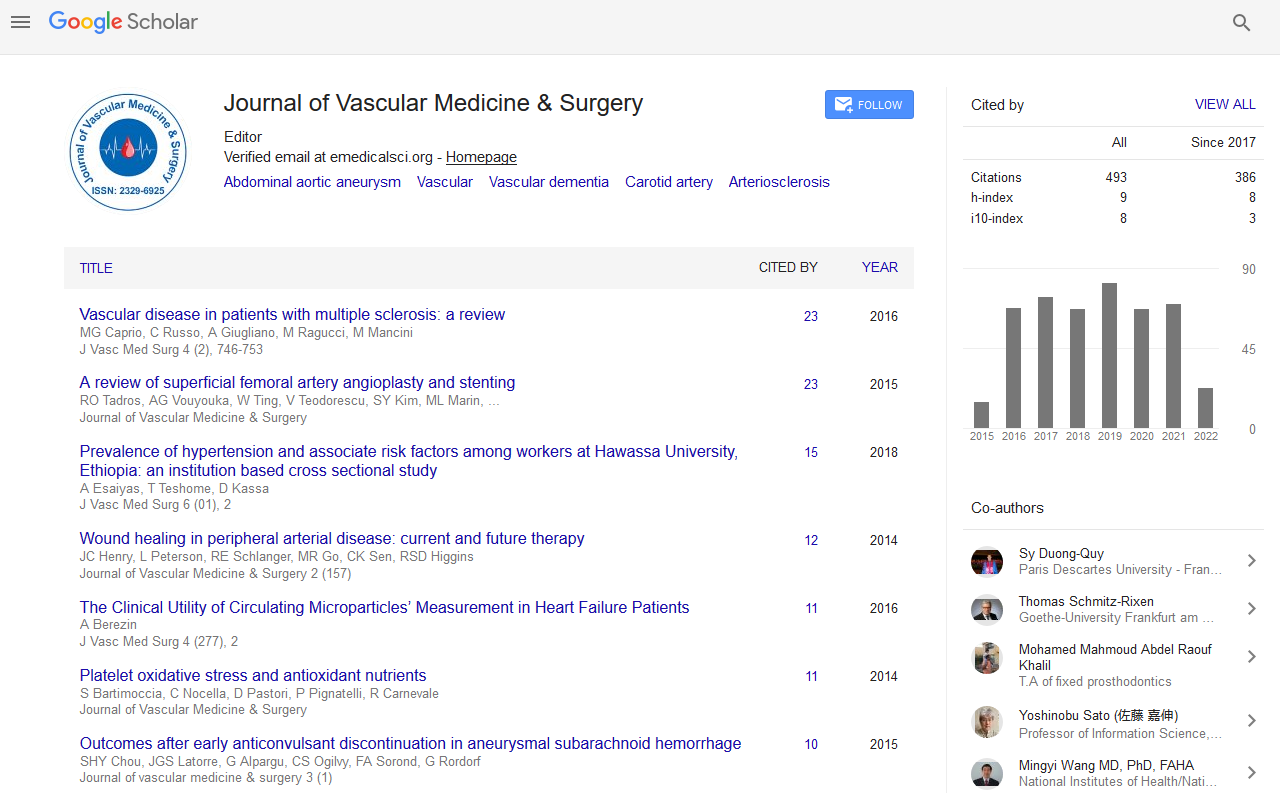Indexed In
- Open J Gate
- Academic Keys
- RefSeek
- Hamdard University
- EBSCO A-Z
- OCLC- WorldCat
- Publons
- Euro Pub
- Google Scholar
Useful Links
Share This Page
Journal Flyer

Open Access Journals
- Agri and Aquaculture
- Biochemistry
- Bioinformatics & Systems Biology
- Business & Management
- Chemistry
- Clinical Sciences
- Engineering
- Food & Nutrition
- General Science
- Genetics & Molecular Biology
- Immunology & Microbiology
- Medical Sciences
- Neuroscience & Psychology
- Nursing & Health Care
- Pharmaceutical Sciences
Abstract
Endovascular Repair of Late Onset Anastomosis Site Pseudoaneurysms Complicating Renal Transplantation
Narayan Karunanithy, Raphael Uwechue, Francis Calder, NizamMamode, LetoMailli, PankajChandak, Mohamed Morsy, Jiri Fronek, David Makanjuola, Derek Roebuck and Nicos Kessaris
Introduction: Extra-renal anastomosis site pseudoaneurysms are a rare complication that can occur following renal transplantation. Expansion and rupture can lead to life threatening haemorrhage. Definitive treatment options include surgical and endovascular repair. Endovascular repair has shown early promise in management and benefits from being minimally invasive.
We report five patients treated with endovascular repair and discuss the factors that need to be considered to tailor individual endovascular treatment strategies.
Methods: Retrospective review of late onset cases of extra-renal pseudoaneurysms managed with endovascular repair at our institutions. Case histories, mode of presentation, imaging, endovascular technique and follow up were analysed. The location, size and configuration of the pseudoaneurysm and the likely underlying aetiology are studied.
Results: Between 2008 and 2013, five patients with six extra-renal pseudoaneurysms were identified. Three of these patients were on warfarin at the time of presentation. Technical success was 100% (6/6) following endovascular repair, with no significant procedure related complications. 5/6 (83%) required one procedure and 1/6 (17%) required three procedures. No recurrence demonstrated on clinical and imaging follow up.
Conclusions : Endovascular repair is safe and effective in treatment of anastomosis site pseudoaneurysms and results in durable mid-term outcome


